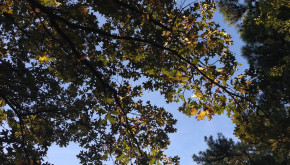
by Tamara Cushing, Starker Chair of Private and Family Forestry, Oregon State University
That’s right, it is tax time again. I know, you didn’t need me to remind of you of that. For those of you who had a timber sale in 2014, you will need to report that income on your 2014 tax return. If you had the timber for more than one year, that income will qualify as capital gains income. Now why would that matter? First off, you get a much better tax rate if the income is classified as capital gains. For 2014, the maximum capital gains tax rate is 20% while the ordinary income rate is a maximum of 39.6%! In addition, income that is classified as capital will not be subject to the self-employment tax. That is an additional tax of 15.3% for 2014!
Do I have your attention yet??
The key here is to make sure you have held the timber for one year. If you received the property as a gift, the holding period is the total time that the donor and donee held the property. If the property was inherited, the holding period is considered met automatically. An important consideration for qualifying for capital gains treatment is the method of sale. If you sold the timber on the stump (and the holding period is met), you qualify for capital gains treatment. However if you sold logs then you will need to claim income as 631a. This is a division of the gain between income from growing the trees (capital gain income) and income from the sale of the logs (ordinary income). Failure to report timber sale income as capital gains income can be costly to a landowner. Don’t panic if you made this mistake on last year’s return. You can go back and amend your return up to three years later. Your 2014 tax return is due April 15th.
For more information on capital gains treatment of timber income and an explanation of the 631a transaction see https://www.youtube.com/watch?v=rASQT41N9LA. You can also find tips for filing for 2014 at http://www.timbertax.org/developments/TaxTips2014.pdf.

